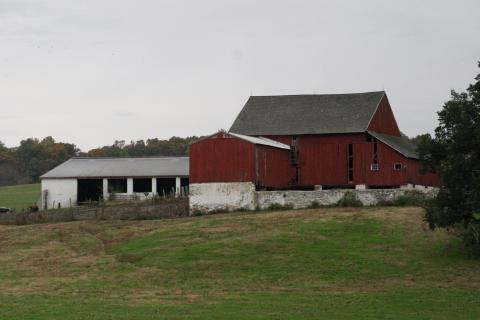Agriculture
In the early 1800’s, agriculture was the leading occupation in all of Chester County. The Indians had been cultivating corn, and the early settlers throughout the county continued to raise corn as an important cereal. They also introduced wheat, barley, oats and rye. But this agricultural pattern was undergoing a significant change at about the time that Pocopson was formed. Between 1840 and 1850, the smaller eastern farms, established when methods of agriculture were primitive, found themselves being out-produced by the larger farms in the newly-opened lands to the west which could more effectively use labor-saving machinery. Although wheat and corn continued to be raised, local farmers introduced other cash crops such as mushrooms, fruit and nursery products to the mix. Tobacco also proved a profitable crop, with production growing from 2400 pounds in 1869 to 600,000 pounds in 1889. Pocopson was reported to be one of the principal tobacco-growing townships in the county, with 150 acres devoted to that crop in 1884. But production then tailed off, perhaps because of unfavorable soil and the availability of other products.
The advantages that western farms enjoyed also influenced which animals were kept on local farms. The number of sheep raised in the county declined by 93 per cent between 1840 and 1850, and hog raising also declined. Oxen had been the chief draft animals prior to 1840, being helpful not only in clearing and plowing rocky land, but also serving as a source of meat. After that time, the tamer and quicker horses took over.
Dairy cattle replaced beef cattle on local farms, helped along by a good water supply and land suitable for pasture. Milk production became very important; in 1870, Chester County sold 1,598,000 gallons of milk, and in 1879, produced 4,247,000 pounds of butter.
Locals established businesses to support these dairies. In 1881, James H. Baily started a butter-making business. A few years later, it was reported that a creamery on the property of George Darlington, Jr., was being expanded to an expected capacity of 25,000 pounds of butter a week. William Kelly was setting up another creamery at Northbrook. The Supplee Brothers of Philadelphia established a milk-processing plant at Pocopson Station, which shipped 12,000 pounds of butter from 33 dairies in one day.
Timber was also a significant crop. In the late 1880’s Pocopson was shipping logs to Germany. In 1912, Will Slawter was reported to have moved his portable engine and sawmill to the property of Pennock Hickman, near Pocopson, to cut a large number of white oak trees. Three years later, about 27 acres of large trees, some probably 100 years old, were cut on the Taylor property by Frank Robinson. Shortly thereafter, notice was taken of a large acreage of timber on the farm of G. Edwin Supplee, between Locust Grove and Northbrook. There were locust trees, young hickories and dogwoods.
Even today, there are several active modern farms in the Township.

